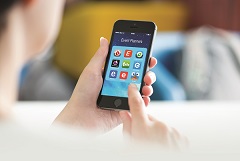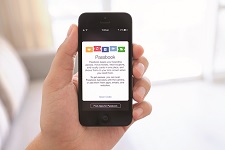
 Mobile apps are popular in all sectors of every industry, and sports are certainly no exception. Organizations that are investigating implementing an app for their sports events may want to know how to get started and what is involved.
Mobile apps are popular in all sectors of every industry, and sports are certainly no exception. Organizations that are investigating implementing an app for their sports events may want to know how to get started and what is involved.
In general, participants and spectators at sports events use apps on their mobile devices to obtain information quickly, even where there is limited connectivity. Downloading an app for a tournament, for example, would allow users to access information regarding which teams are playing in which venues at what times, and where and how to get tickets. It might give directions to venues or provide information on the fastest routes to get there, where to park and so forth. The app might also provide alerts or updates regarding the event. It might even help market restaurants in the area by noting they have pre- or post-game specials. It could even tell users what is happening at the sports venue in the weeks leading up to the tournament.
Apps can be a great benefit to participants in and spectators of an event. But while it’s easy for the event organizer to say, ‘Maybe we need an app,’ it’s essential to understand how they are developed and what is involved. Here is an overview:
Types of Apps
Platforms: For the purposes of this article, and with regard to sports events, two basic options exist for developing apps. One is to use a platform-based app. This is the less expensive of the two choices. Users can expect to put in about $5,000 to $10,000 to have an app created based on a platform. In this respect, a platform is a bit like a template; it needs to be customized for the client.
Platforms can be used by an app design company, or users may want to try to make their own app by using software available on the market. Apps for Venues, a popular platform for facilities, is one example, and AppMakr is another.
Custom: A custom app is an option applicable to very large events. Examples might be the U.S. Open or the Super Bowl – in other words, an event expected to draw thousands of attendees and to have multiple activities going on at various times. A custom app will cost no less than $100,000 and may well cost more.
Smaller events and youth sports generally find platform-based apps more relevant to their needs, so we will address those. The advantage of a platform is that some of the work has already been done, meaning the app will require much less time to be developed than would a custom app. However, the drawback is it might visually resemble another app on the market, since the design is not exclusive.
Time Involved
Apps, like websites, require time to design, develop, test and implement. They can’t be a last-minute decision on the part of the sports event owner. Once the event owner has nailed down the information the app should contain (to be discussed shortly), another 60 to 90 days should be allowed for development – and it’s always better to provide more time, rather than less. In addition, the app has to go through the approval process (such as with Apple), so at least another few weeks will be needed. Because of all this, we usually recommend people start the process at least a full six months before their event.
Purpose/Content of the App
The purpose of the app is to provide assistance to end users. Therefore, you have to start by figuring out what those people need to know. This will be the content of your app. It might include a full schedule of what is happening throughout your event, where to buy tickets (and the cost), where to park, directions from place to place and so forth.
The mistake many people make the first time they work with an app developer is overlooking simple information and instead adding features that aren’t really valuable to the end user. Concentrate instead on the app’s practical use and on the ways it can be used to market what is going on.

As previously mentioned, there are programs that can be used to design apps, as well as companies that specialize in doing this design work. The best option will be the option that works for the client; however, if you elect to do it yourself, make sure to build in plenty of extra time for your first attempt.
If you decide to go with a company, do your research. This is another time-consuming aspect of the process. The company you choose should be well established and should have a track record of success. You should be able to download their apps to your own mobile device to get a sense of how they perform. (This may be difficult, since what you download may not resemble what you have in mind).
Marketing the App
Once your app is ready for use, you’ll need to market it to your attendees. Start in advance of your event. Remember that once people get in the gate and get busy with the sports event, they may not want to wait for an app to download on their phone. Mention it in all e-mails as well as on the website, e-mail blasts, etc.
All designers, without exception, warn their customers against offering apps that people have to pay to download. Go with a free app or don’t go with one at all. We already know that 50 percent of the people using the Internet are accessing websites and other information through their mobile devices. If they feel they can get their information without a charge, they will do so. After all, if you have ever wanted to find an app that performed a specific function, we’re pretty sure you’ve probably browsed the app store and bypassed the options available at a charge in favor of the free ones. Your participants and spectators will do the same.
Another key piece of advice: when making arrangements for design and development, ascertain the account for the app is in your name, rather than that of the company designing it. This may become useful down the road, should you decide to work with a different company for a future event.
After the Event
While a native app (that is an app written for a specific hardware platform) may contain follow-up information, such as where and when the event will be held next year, it cannot be used indefinitely. Apps, unlike websites, cannot be continually refreshed with new information. iPhones and Droids are subject to updates, and when those occur, apps often are not compatible with the new system and are prone to crash. We generally advise people that an app can remain useful for 24 to 36 months at the longest. In other words, you will need to have apps developed for future events.
Do I Really Need an App?
Good question. Apps, as we’ve mentioned previously, are great in situations where people might not have great connectivity but still need access to a lot of information quickly. If, however, your event is simpler – having a small number of attendees, one specific location and/or an uncomplicated format, attendees might not find it that useful.
Justifying the cost may also be another obstacle. If you are concerned about your bottom line but still want to have an app, you have to find a way to make it generate revenue. Paid apps aren’t a great option; you won’t recover your investment that way. Instead, think about pre-selling sponsorship of the app. If, for example, a local car dealership sponsors the app, your designer can create a way to have the dealer’s logo displayed at the bottom of the app when it is opened. Other app revenue drivers are incremental ticket sales or food, beverage and merchandising sales—carefully and and conservatively model those.
Apps can help answer questions, streamline the communication process and market your event. Put plenty of thought into the need for them, and into their planning and design, and you can reap the benefits.

